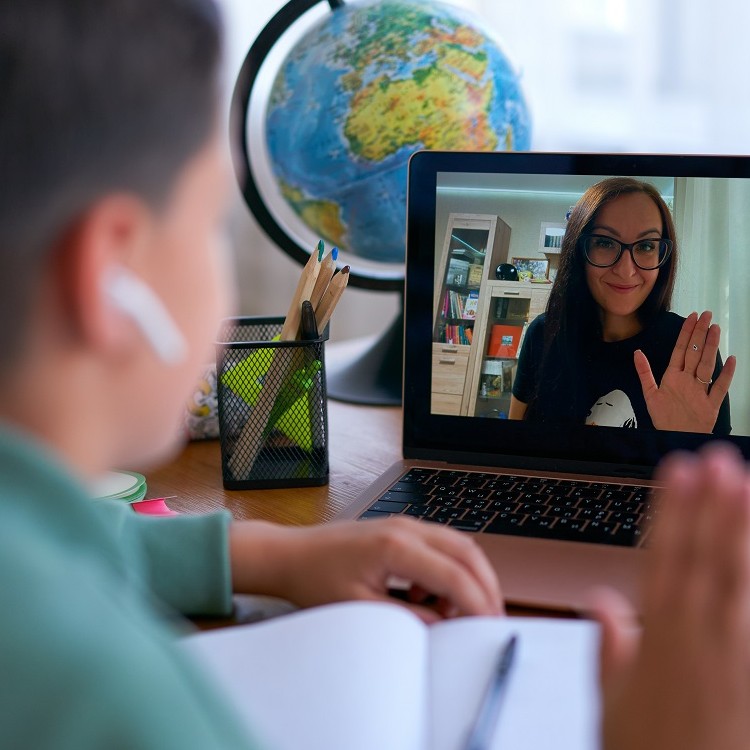Achievement badges, health bars and boss battles are familiar in gaming circles, but the tools that motivate us to play through the hottest video games might also be the future of e-learning.
Over the last decade, gamification has exploded in a variety of industries as companies search for ways to make their products and services more compelling.
Distance learning during the COVID-19 pandemic only accelerated gamification in e-learning as educators sought new and innovative ways to reach students outside the bounds of a traditional classroom.
As students return to classrooms and workers to offices, experts predict that distance and online learning will endure—but also, evolve. The side effects of distance learning, like Zoom fatigue, underscore the need to accelerate edtech trends. In fact, research by online study resource OneClass finds that 75% of college students have been unhappy with the quality of e-learning during COVID-19.
OneClass founder and CEO Jack Tai thinks he knows why: Educators are trying to re-create an in-person education, digitally.
“People interact differently online, and better digital platforms can facilitate better online experiences. Trying to re-create in-person classes online inevitably leads to problems like Zoom fatigue, lack of motivation and increased learning anxiety from the lack of immersion,” Tai writes in a piece for Forbes. “A better-designed online class combines knowledge about how students learn with technological factors such as user experience and information architecture.”
What Does Gamification Add to E-Learning?
For learners of all ages, the cure for post-pandemic learning malaise might be gamification, which drives learning using game-based concepts like rewards, competition and visible achievement.
During the pandemic, educators and businesses integrated gamification to mediate disturbances in work and learning.These lessons in creating multimodal lesson plans have changed how educators and students teach, and expect to be taught. E-learning and digitally-focused experiences are no longer an afterthought or an added bonus, but are central to how educators plan lessons.
“COVID-19 has accelerated the investment and growth of edtech and software to enable e-learning, with big strides and improvements made in LMSes (learning management systems), SISes (student information systems) and assessment software, in addition to immersive learning with AR/VR and gamification tools,” Sarah-Jane McQueen, general manager of CoursesOnline, said during a roundtable discussion hosted by Education Technology magazine in March 2021.
As students return to a more traditional classroom setting, tech-centric learning models that are powered by cloud computing will continue to grow in use and complexity. So much so that the edtech sector—already valued at $227 billion—is projected to be worth $404 billion by 2025, according to education market intelligence provider HolonIQ.
“Blended models which were already gaining pace will become the norm and learning won’t just happen in the classroom,” McQueen said. “With more and more generations becoming digital natives, there is a paradigm shift to learning on the go, which places a great deal of value on the convenience of online learning.”
Therein lies the promise of gamification in learning: E-Learning needs to be not just convenient, but also engaging and effective. Because it taps into innate human cravings for fun, competition and achievement, gamification might be the ticket.
Duolingo: A Case Study in Gamification
Duolingo, a mobile app for language learning, is often heralded as the most successful example of e-learning gamification. Launched in 2011, it boasts more than 300 million active users that complete nearly 7 billion monthly lessons. Gamification fuels its massive success. Once you’ve created a profile and chosen the language you’d like to learn, the app uses a bevy of gamification strategies to track your progress, motivate daily use and incentivize regular engagement.
“Motivating yourself to learn is very hard and learning a language is even harder, especially when you are doing that online on your own, so we realized early on that we needed to try to encourage people to form a daily learning habit,” Zan Gilani, associate product manager at Duolingo, said at the 2017 Canvas Conference. “We found that the most effective techniques for this come from the gaming world.”
During his talk, Gilani outlined four main strategies for introducing gamification to the app, including the ability for users to set their own daily goals, visually showing users’ progress, utilizing external triggers to push them back into the app and creating a game mechanism that rewards daily use.
Language learners level up by earning experience points that are awarded in exchange for completing daily practice sessions and lessons. Progress indicators show how much time you’ve spent on lessons and award badges for completing tasks.
In 2019, Duolingo—which uses a hybrid-cloud infrastructure to optimize performance and reduce latency as it delivers language lessons across the globe—revamped its design to make the app to feel even more like a video game. The redesign centered on making the entire interface more cartoonish with significantly more animations. When the redesign launched, Tyler Murphy, the company’s head of design, told The Verge that it was inspired by video games like The Legend of Zelda, which features a heart-shaped “life gauge” by which to measure the health of main character Link. Like Zelda, Duolingo now features a heart bar that diminishes when users get an answer wrong.
Meanwhile, the app’s green feathered cartoon owl, Duo, sends daily push notifications to users to encourage them to open the app; if they don’t, the company sends an email of Duo in tears.
“Games usually have an icon like Mario, who’s always appearing in different positions and with different facial expressions,” Murphy said of Duo. “We definitely have seen that our users are attached to Duo.”
Potential Gamification Pitfalls
Gamified thinking can lead to improvements in daily learning, and drive users to further engage with a subject. But there also are serious ethical considerations.
Authors Kevin Werbach and Dan Hunter explore the potential pitfalls of gamification in their recently updated book, For the Win: The Power of Gamification and Game Thinking in Business, Education, Government and Social Impact. In a podcast with Knowledge@Wharton, the duo discussed the educational benefits and the potential ethical missteps of gamified thinking.
“This can motivate people in really, really significant ways. And that’s great for business. That’s great for the outcomes that you’re looking for. But it can have some really serious implications in their lives,” Hunter said.
In 2018, for example, Disney gamified working conditions to increase productivity for laundry workers at its hotels. Scoreboards kept track of daily goals, and if you didn’t reach them your name appeared yellow or red to broadcast your failure. Workers called this system, “an electronic whip,” according to a deep dive that Fast Company magazine did into the “dark side of gamifying work.”
Weback said that ethical gamification starts by keeping the user in mind. What specifically do you want the use to do, and how do you structure an experience around that desired behavior in a fun and ethical way?
“Just because people will use these gamified approaches and do the things that you want them to do—that doesn’t mean that you should be doing that,” Hunter said. “And that’s the sort of care and responsibility that we all need to take in relation to any of these sorts of approaches.”
The Future of Gamification
In schools with children and in the workplace with adults, gamified tactics in digital spaces create a community that is often missing when sitting through an online lecture or watching a video. They also drive users to continue learning on their own.
Gamification platforms like Classcraft, for example, helped teachers create “boss battles” with which to fight Zoom fatigue. Every day, students engage in a new battle wherein they can defeat the boss or villain of the story only by completing a series of educational quests—for example, math problems or reading comprehension questions. This strategy turns classwork into a collaborative and creative way to motivate students within a digital space.
Corporations similarly gamified corporate learning for training. Global professional services firm PwC, for example, for years has used a trivia game called PowerUp! for onboarding and development, which it revamped during the pandemic.
“None of us could have known that the world would change in March of 2020 due to COVID-19,” PwC Chief Learning Officer Leah Houde said in July during a virtual media presentation. “And yet our digital upskilling investment really helped enable us to quickly and seamlessly pivot to learning, working and leading virtually. One of the things that we did was adjust our PowerUp! games for the current environment.”
The trivia game helped PwC train and develop more than 3,000 virtual interns when many other companies were cutting internship programs altogether.
Gamification is poised to be a cornerstone of online learning for years and decades to come.
“Games are this incredible motivator,” Hunter said. “If you can wrap up a process inside some kind of game elements, then people will do the most amazing things.”
Editor’s note: This is an updated version of the original article published on April 7, 2021.
Jacob Gedetsis is a contributing writer. His work has appeared in The Kansas City Star, The Post Standard and The Plain Dealer, among others. Find him on Twitter at @JacobGedetsis.
© 2021 Nutanix, Inc. All rights reserved. For additional legal information, please go here.






